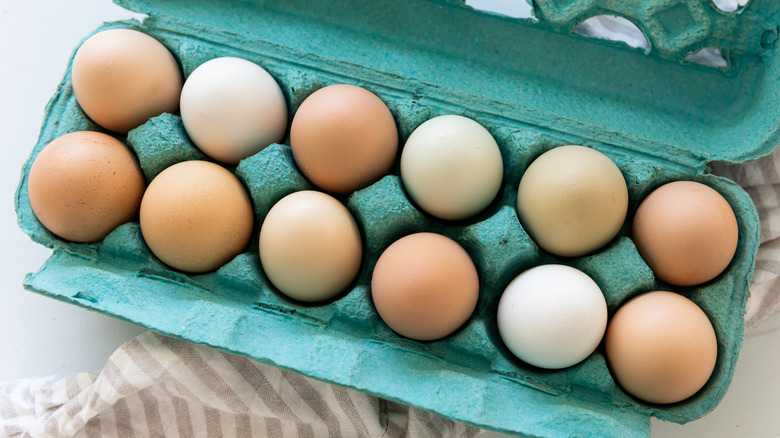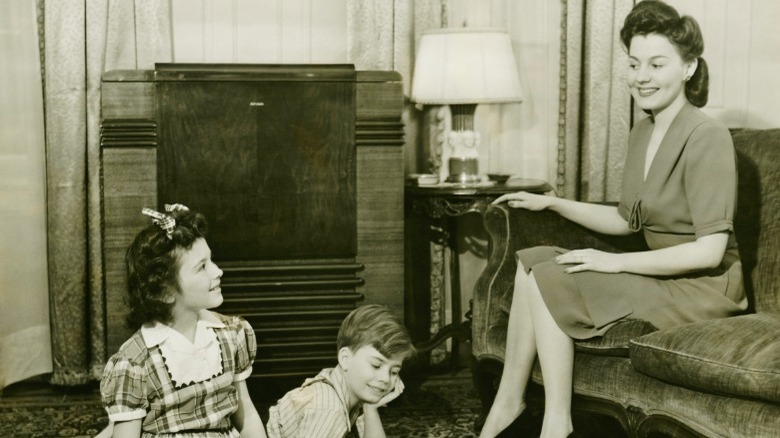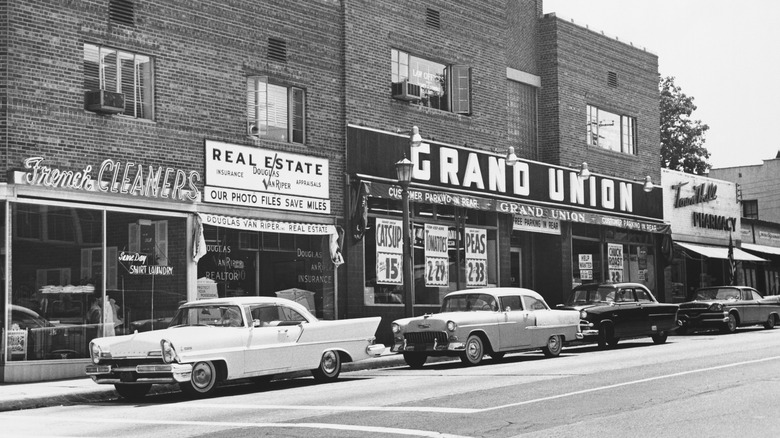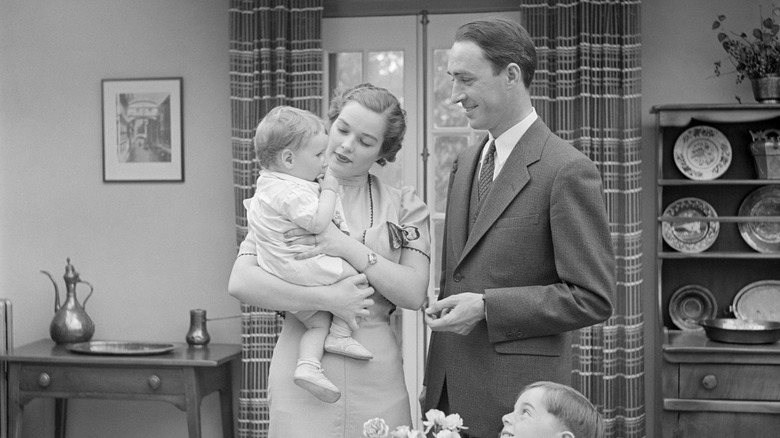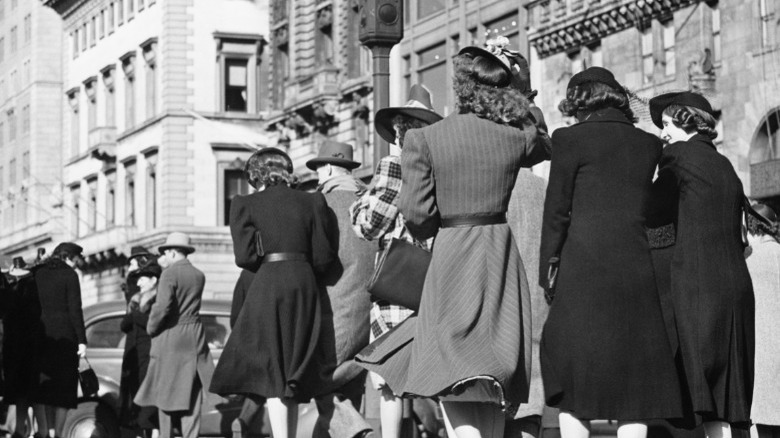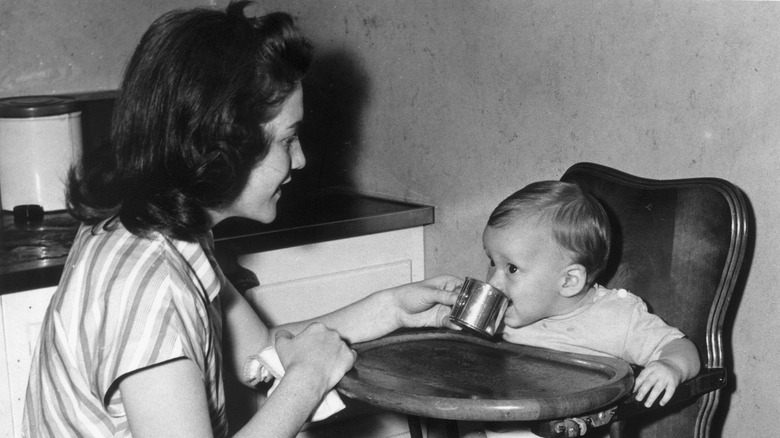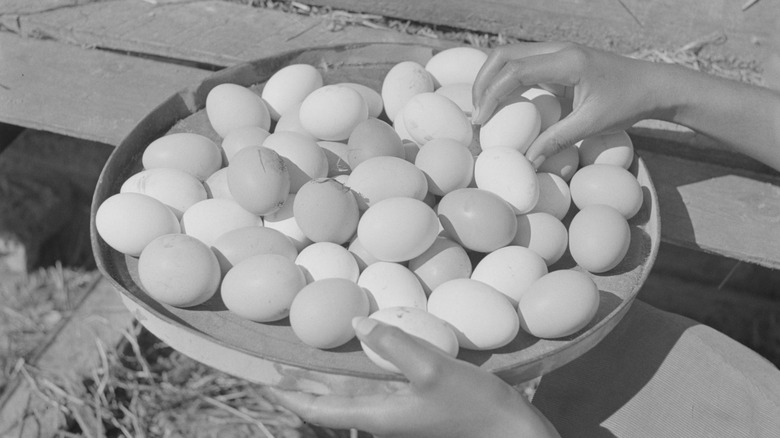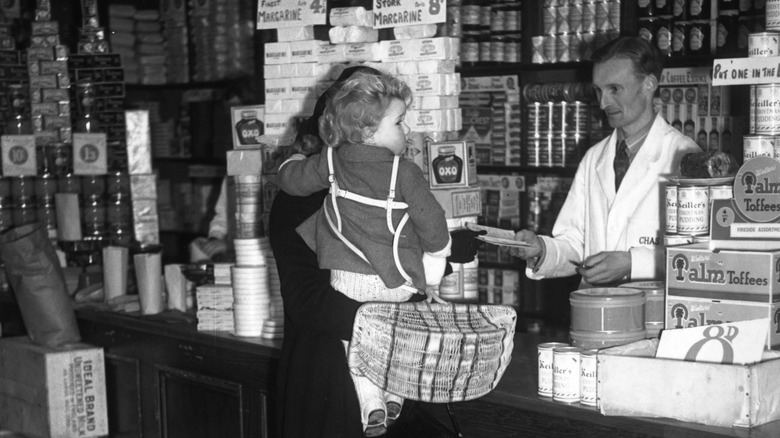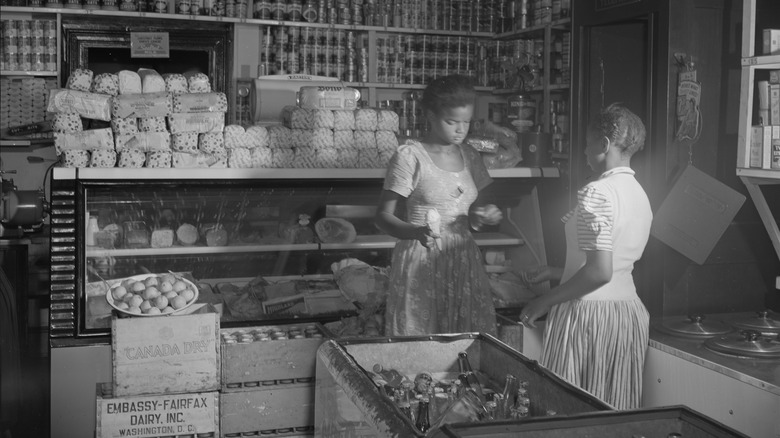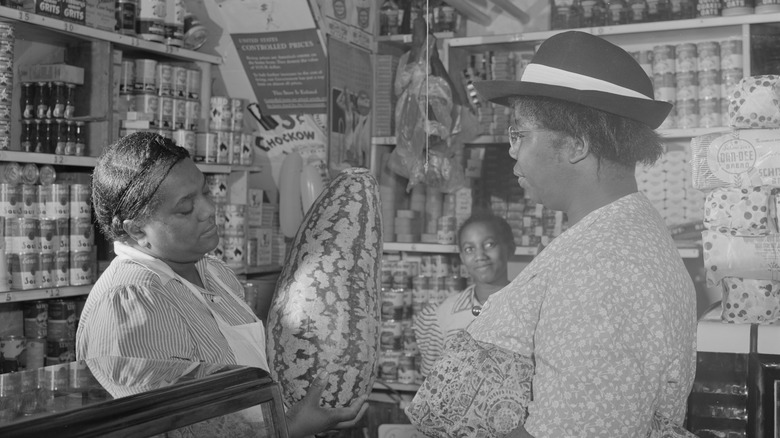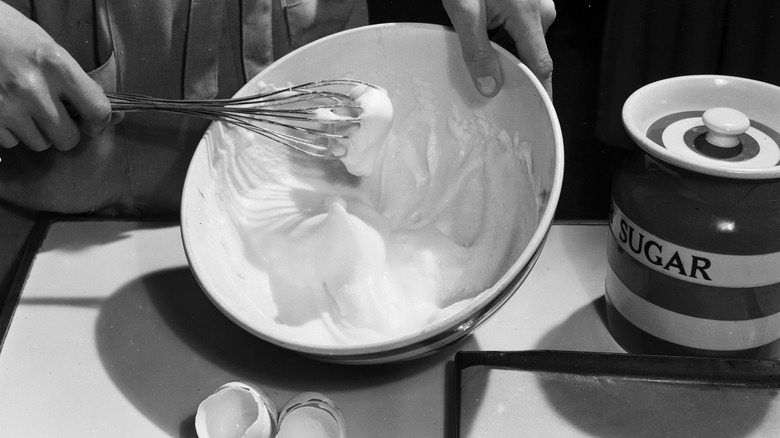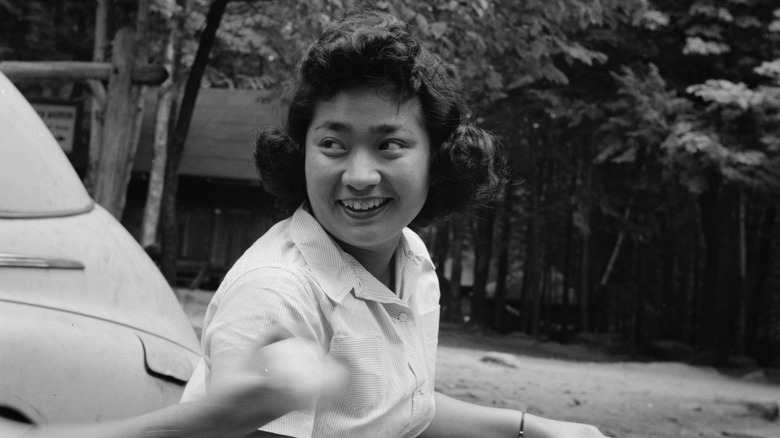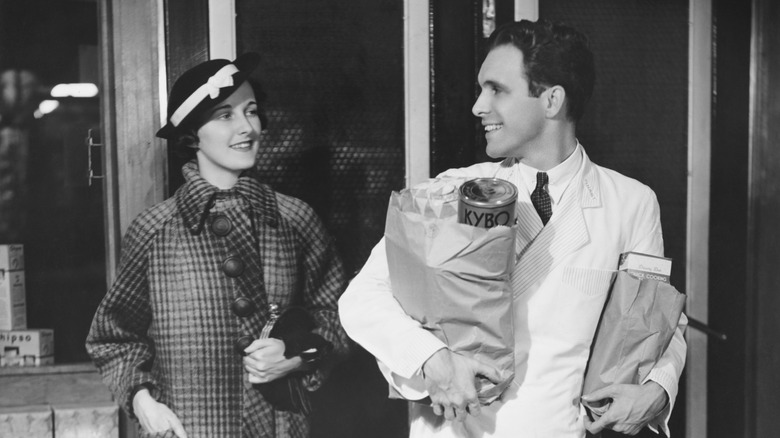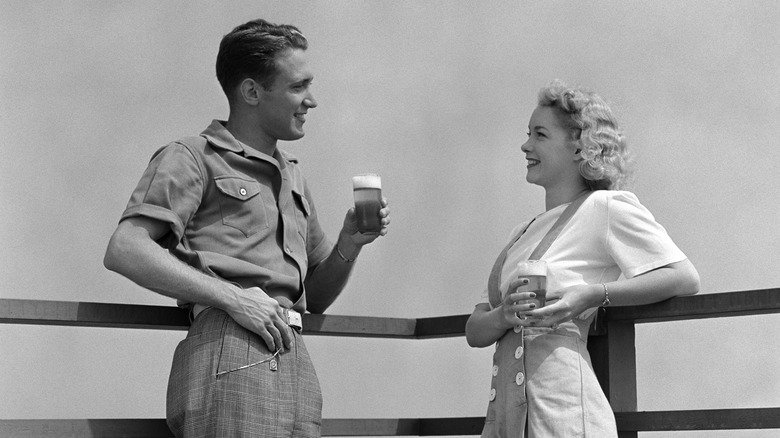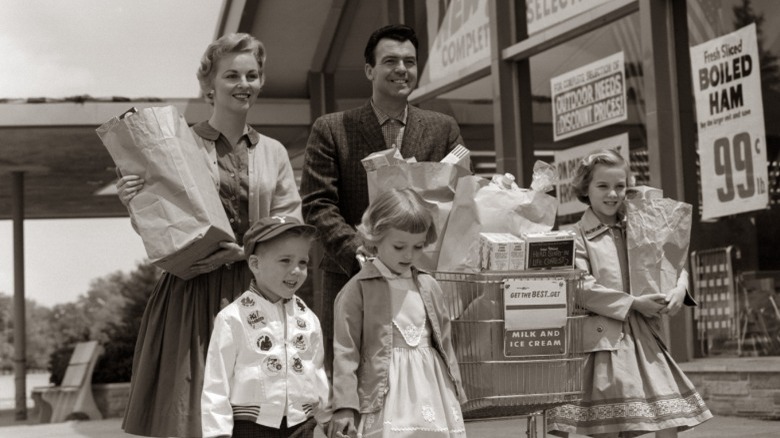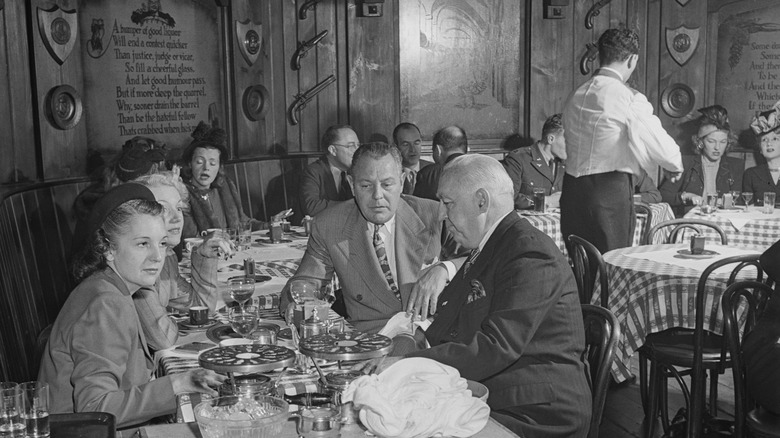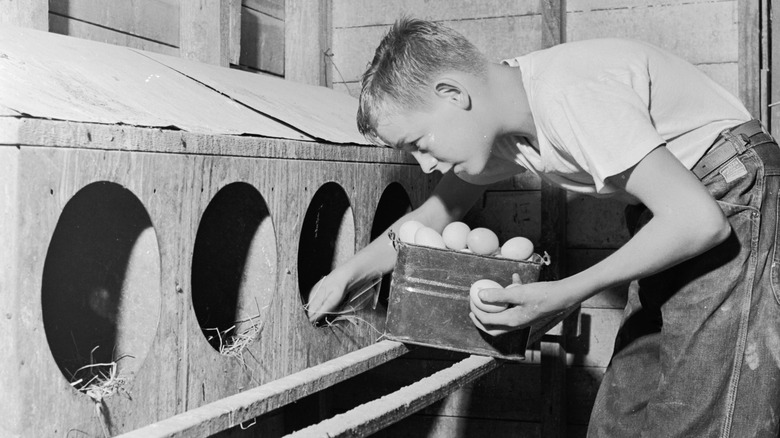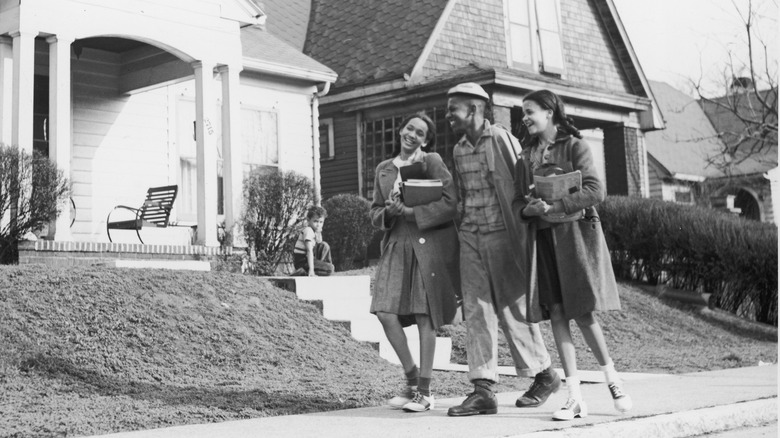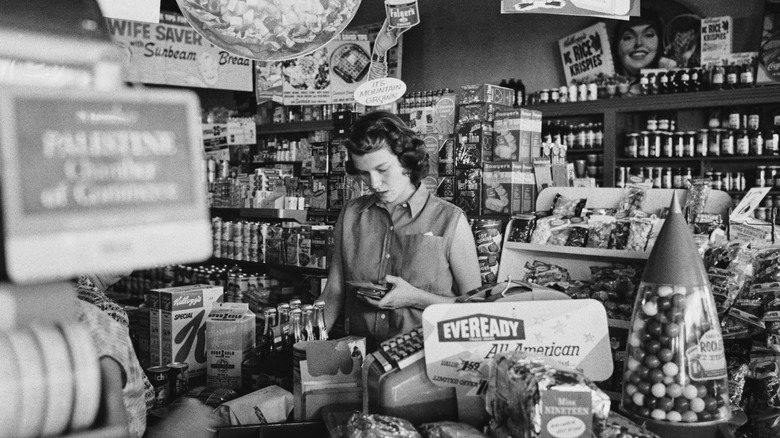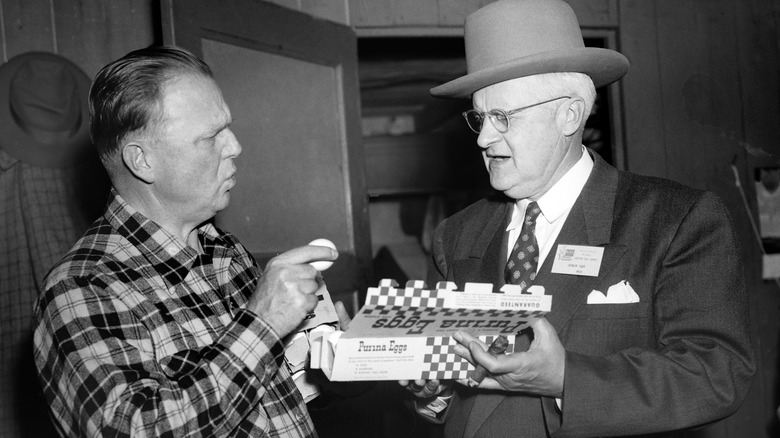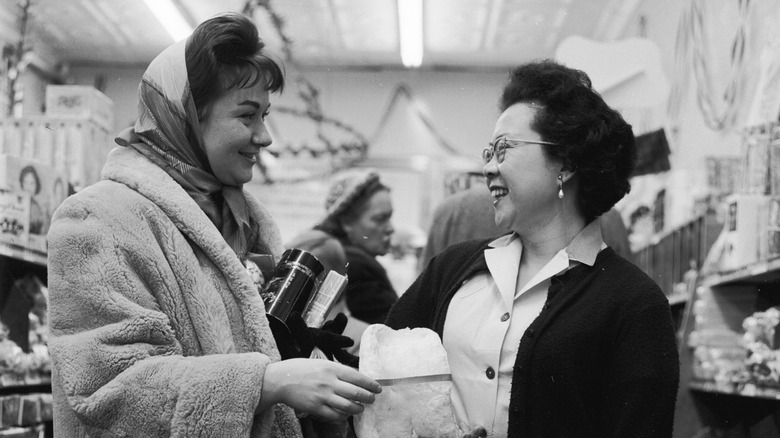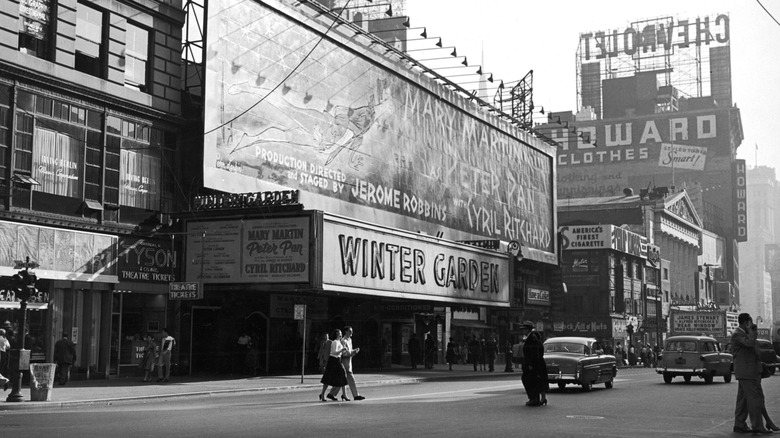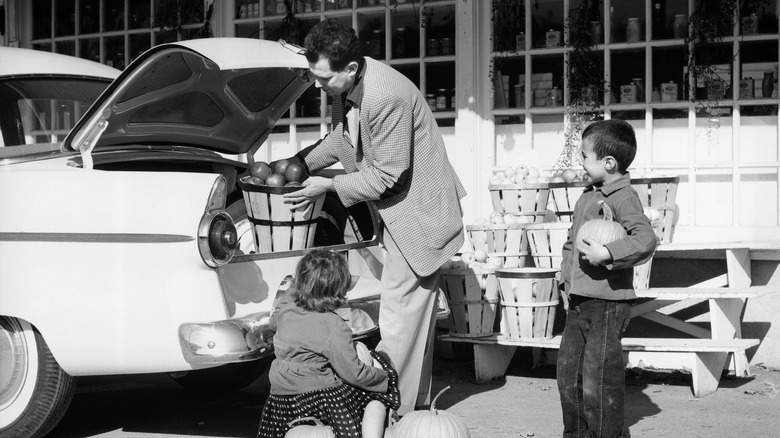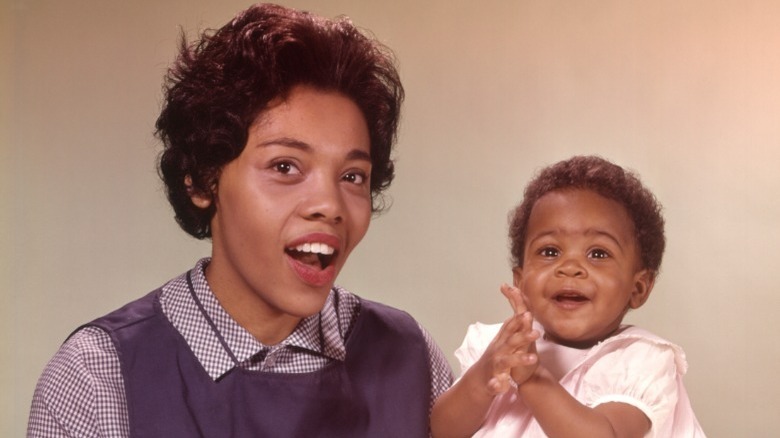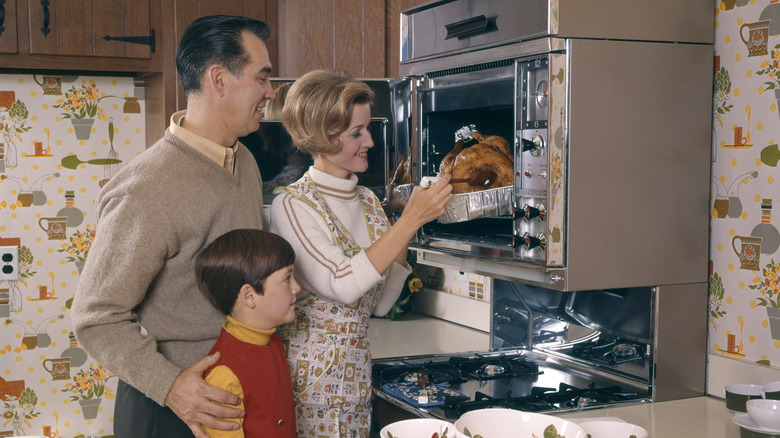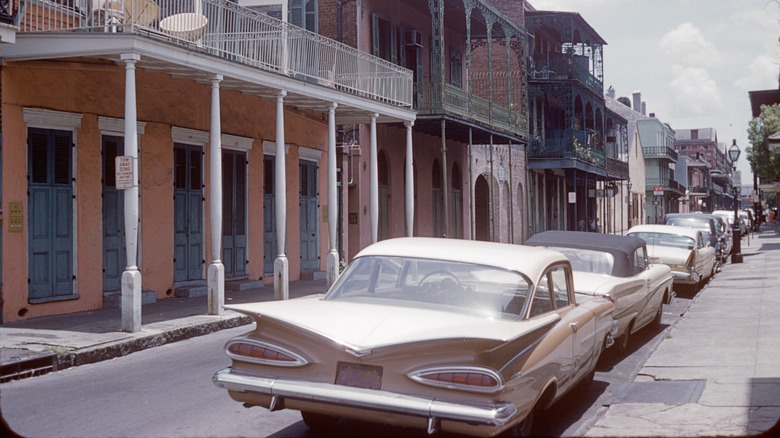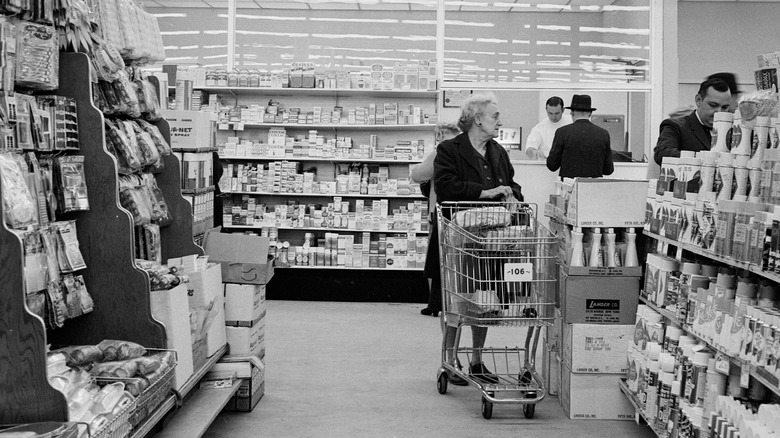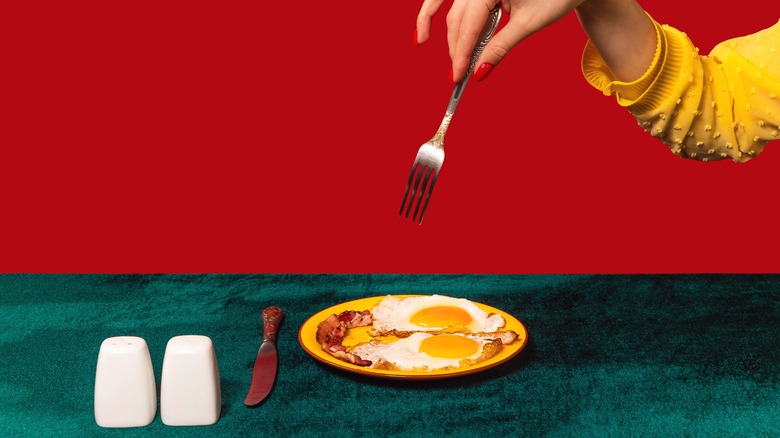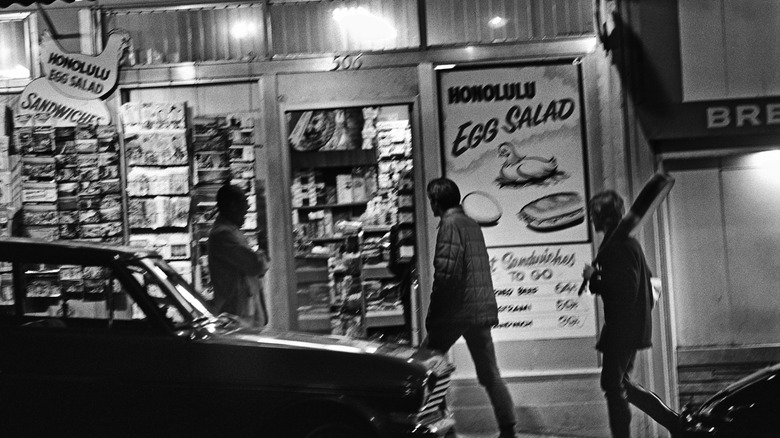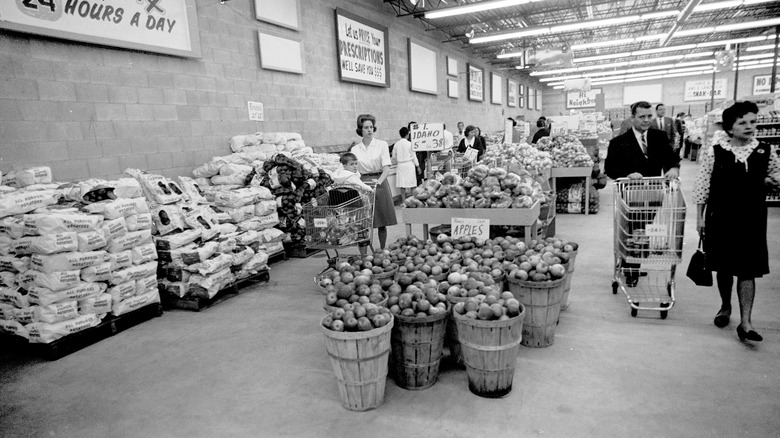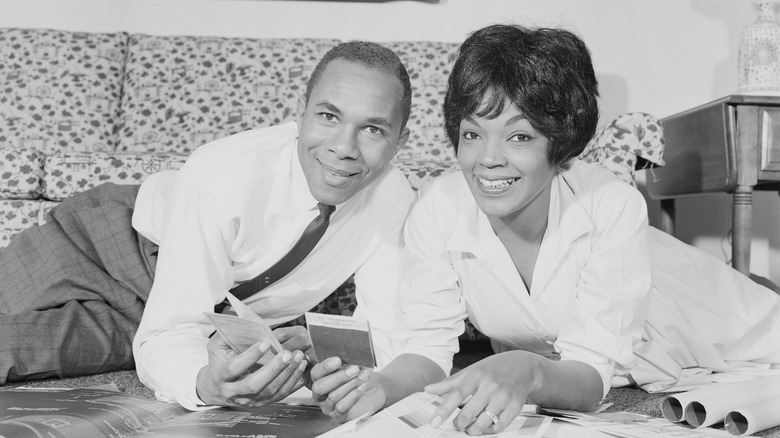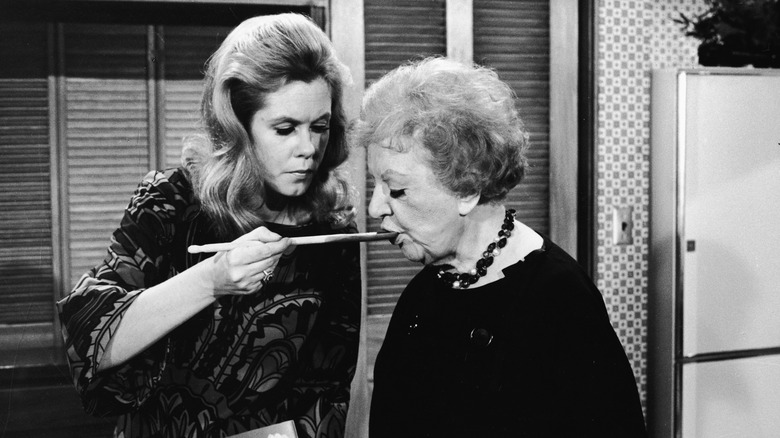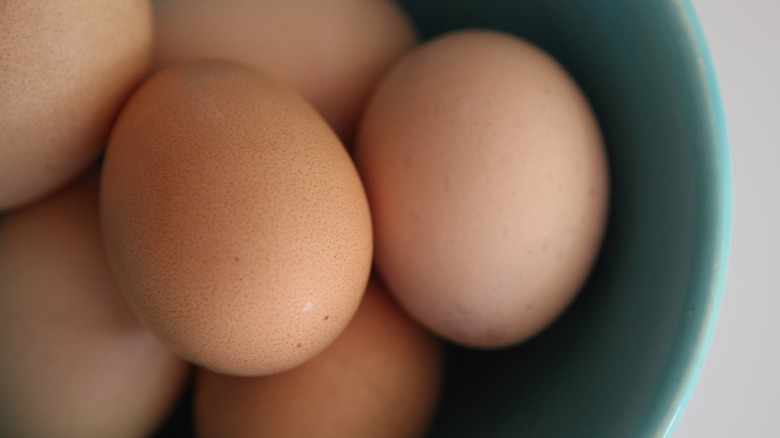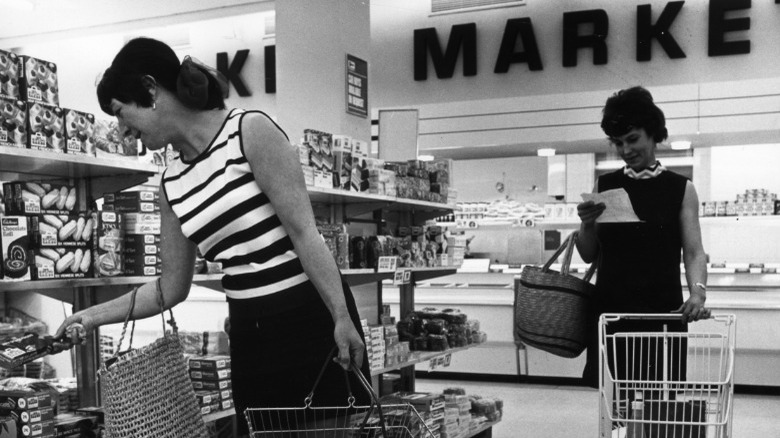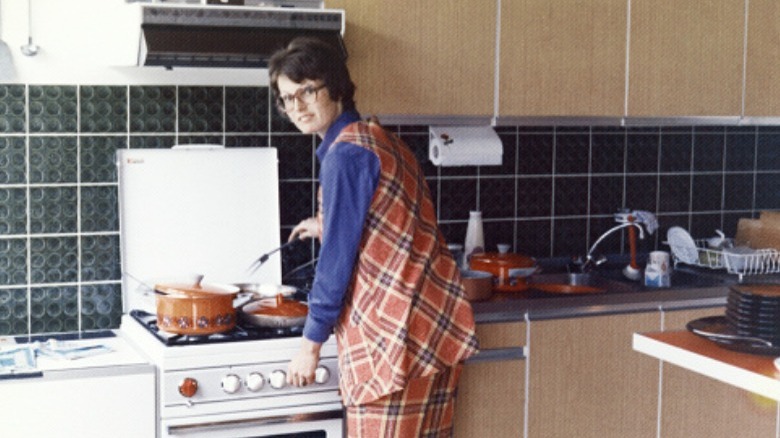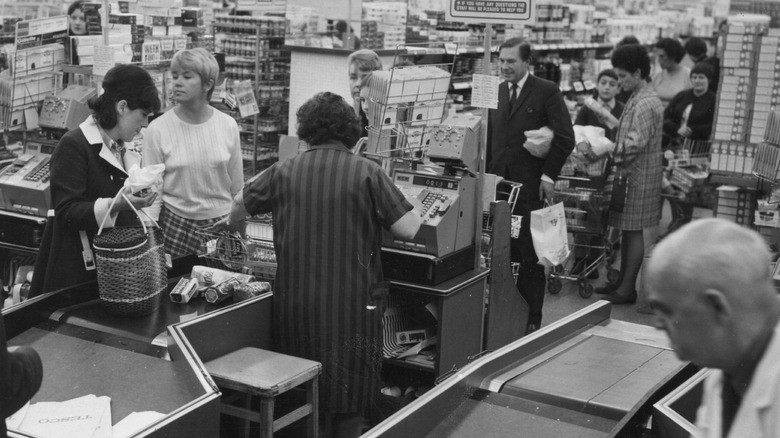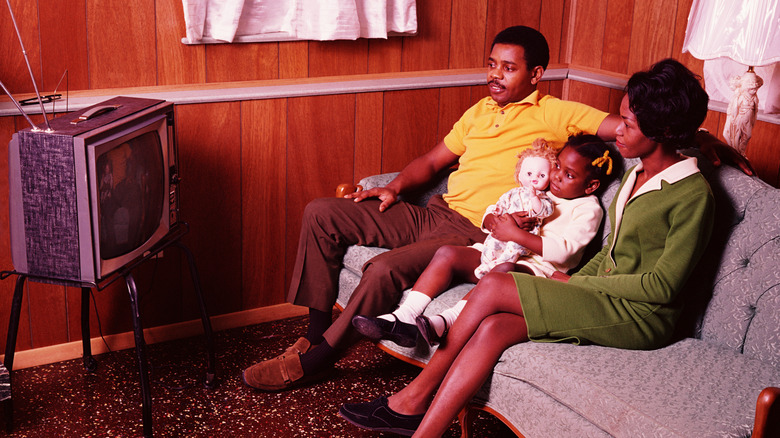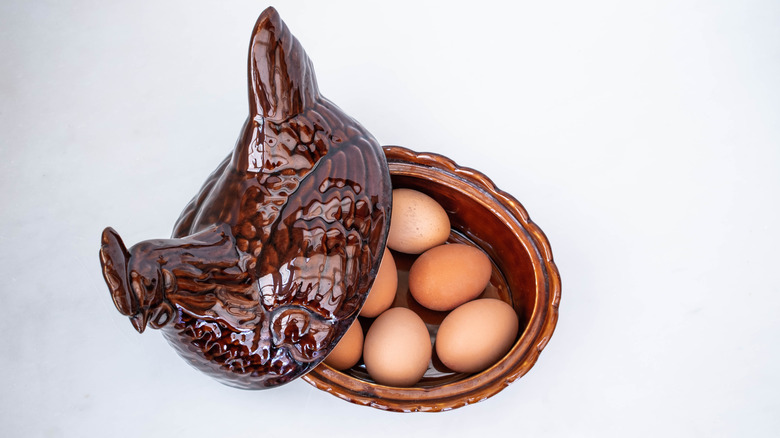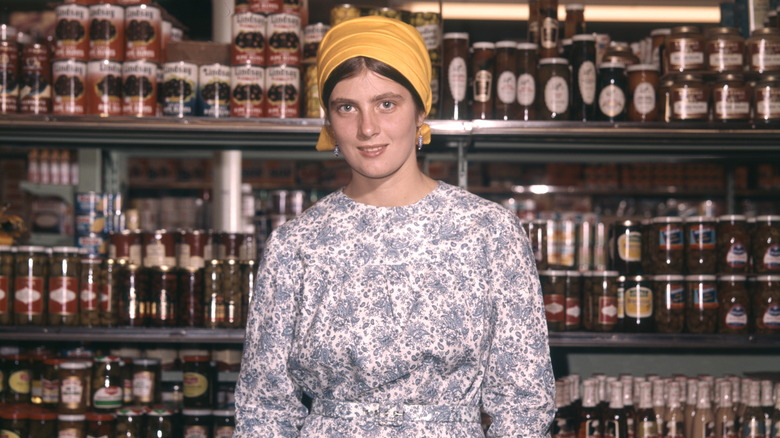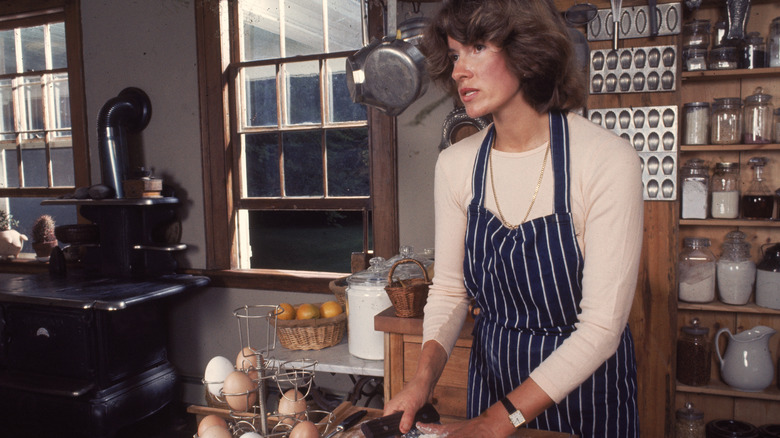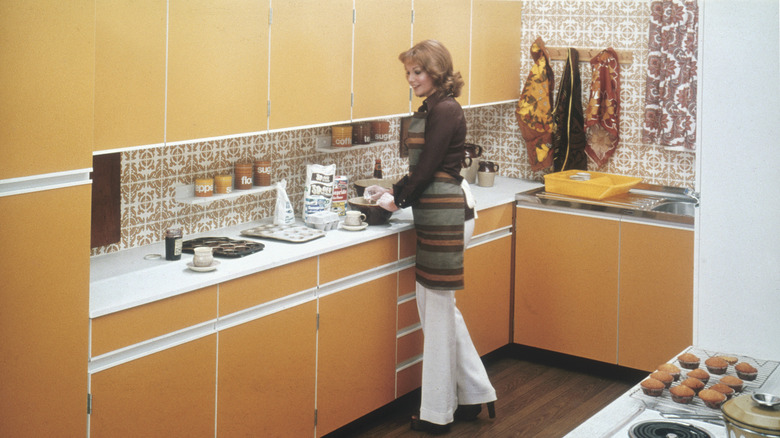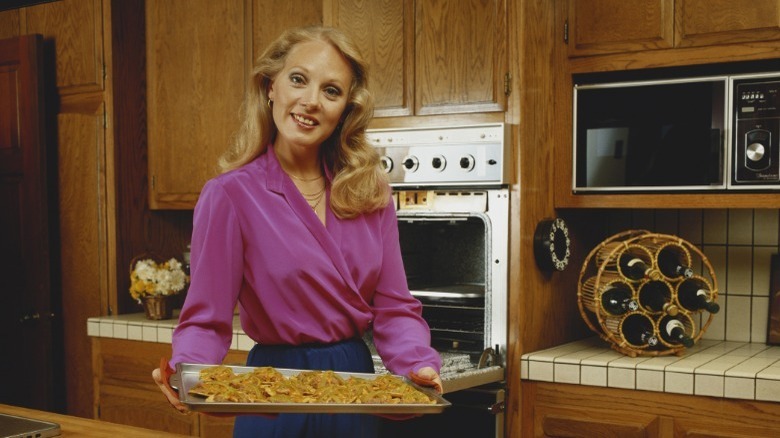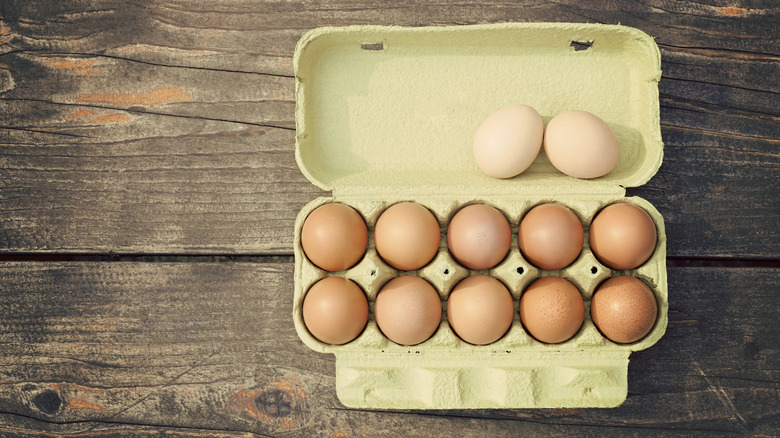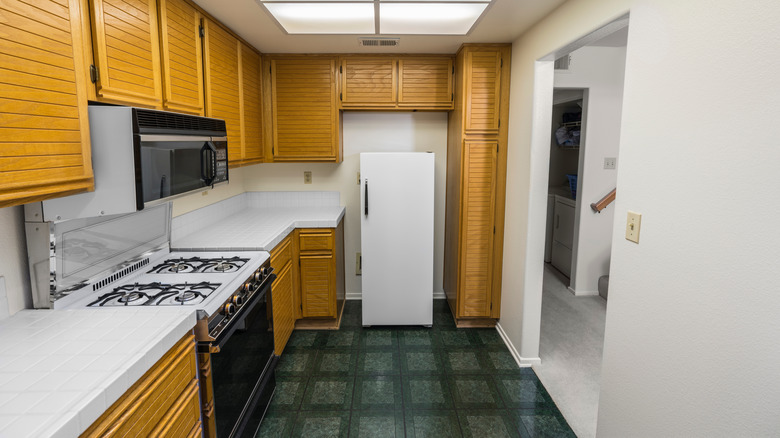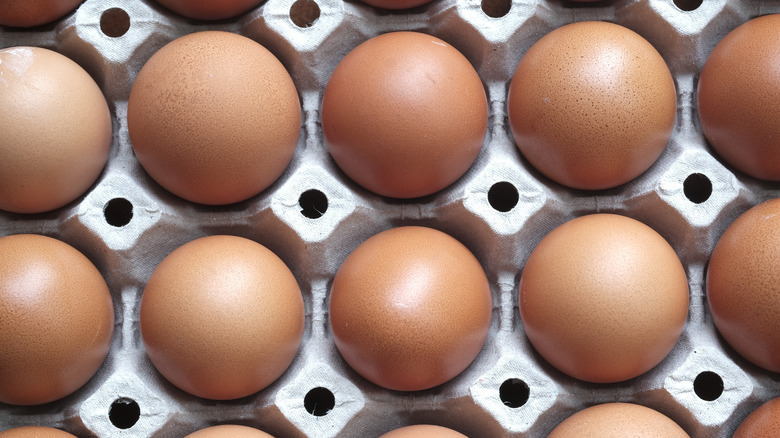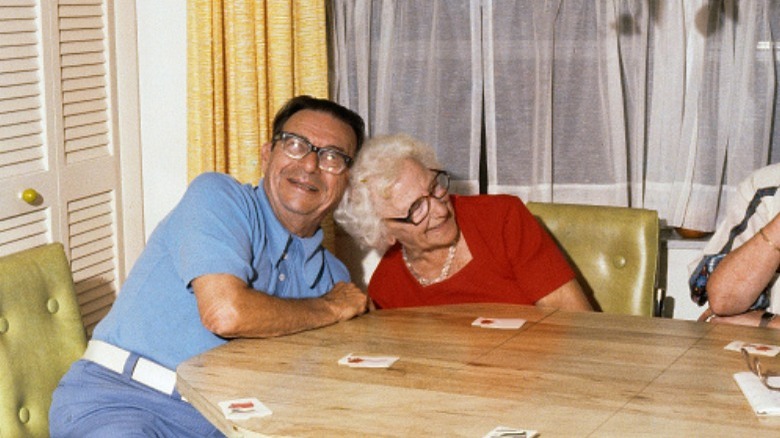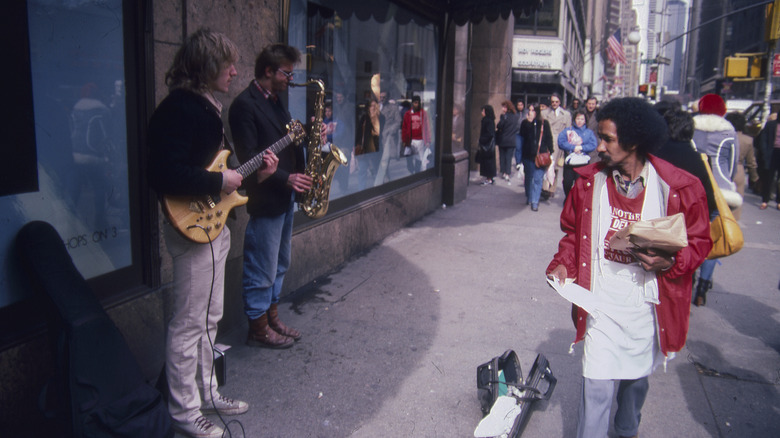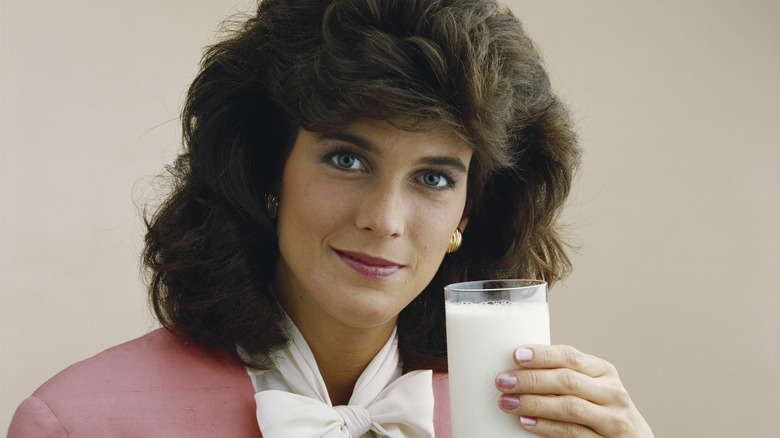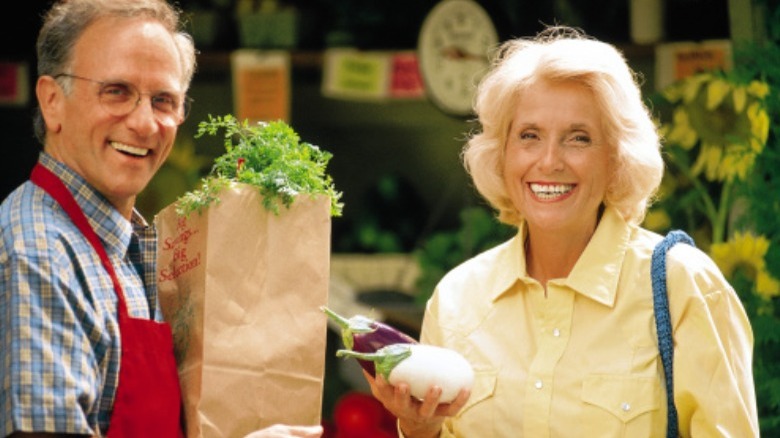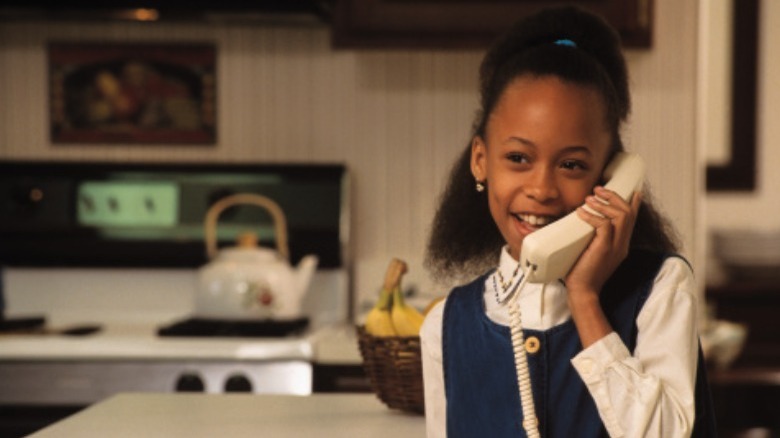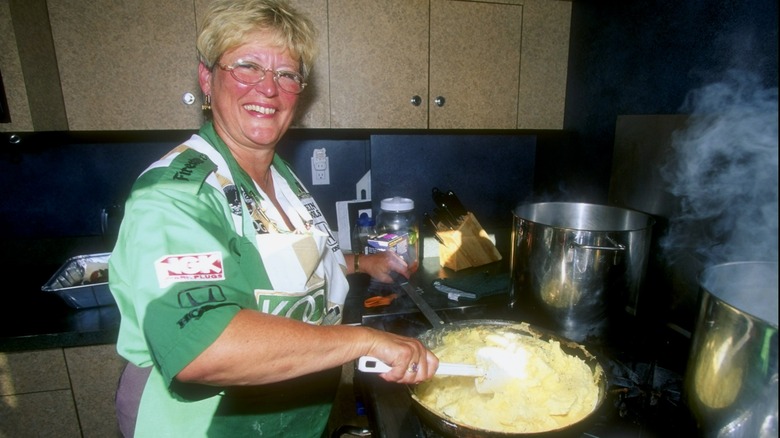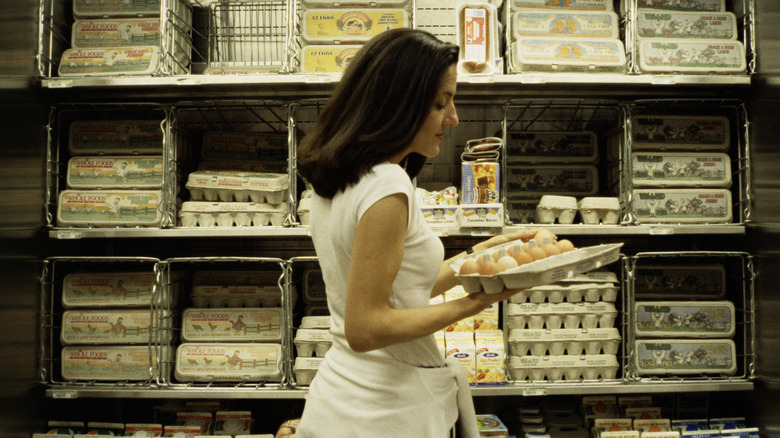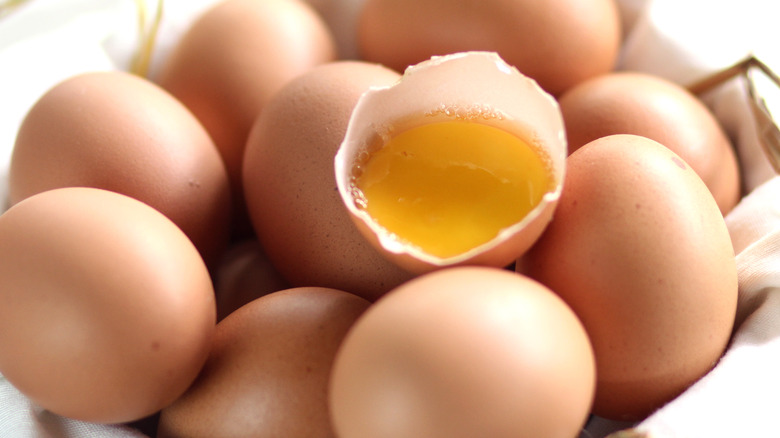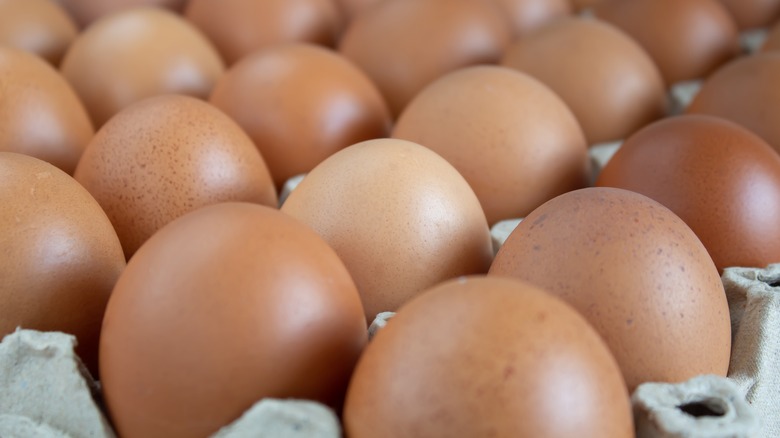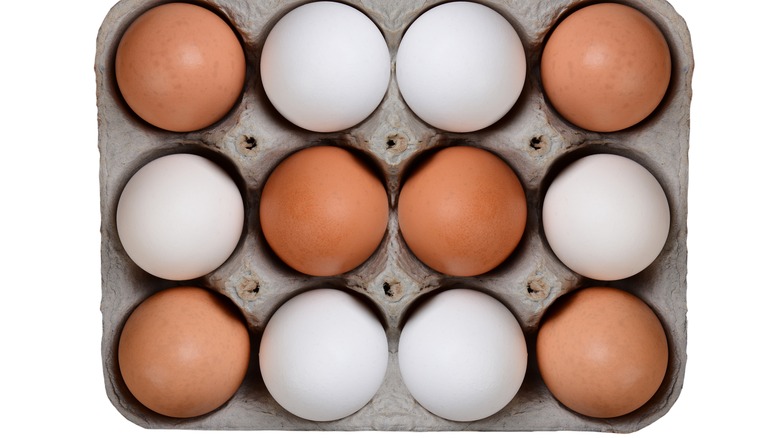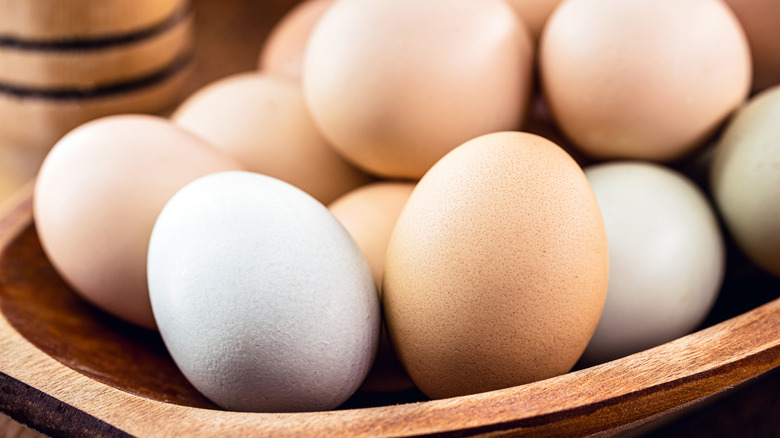How Much A Dozen Eggs Cost The Year You Were Born
The humble egg is one of those foods that pops up just about everywhere. An egg can be cooked in dozens, if not hundreds, of different preparations, and just like any other commodity, the price has really fluctuated over the years.
Tracking down the retail price of a dozen Grade A eggs over the decades wasn't an easy task, as prices have varied from store to store over the years, and supermarkets haven't kept track of prices for decades on end. So in order to get an annual retail price that we could stand behind, we worked with the U.S. Department of Labor's Bureau of Labor Statistics, which provided documents from the Consumer Price Index with annual average prices for a dozen Grade A eggs dating back to 1890. As these are the government's figures, compiled by visiting businesses that sell eggs and collecting price quotes on a monthly basis (so going beyond just flipping through the prices in old supermarket circulars), these are as close to "official" prices as we're likely to find.
Egg prices have gone up and down over the past 80 years, but on the whole, a dozen eggs have gotten a lot less expensive than they used to be, once we adjust for inflation. So if you took any trips to the grocery store with a parent when you were a baby, read on to learn how much they would have paid for a dozen eggs each year between 1937 and 2005.
1937: 36 cents
In 1937, a dozen eggs would set you back 36 cents, or about $6.40 in today's dollars. 1937 was also the year that Spam, Three Musketeers, Kraft Macaroni and Cheese, Good 'n Plenty, and Kix cereal hit the shelves.
1938: 36 cents
The price held steady at 36 cents in 1938, the year radio listeners were sent into a tizzy by Orson Welles' broadcast of "The War of the Worlds." Famous culinary inventions of the year included Nescafe instant coffee, Teflon, Nestle's Crunch and Hershey's Crackel bars and Mott's apple juice.
1939: 32 cents
A dozen eggs cost 32 cents in 1939, the year that Hitler invaded Poland, the World's Fair came to New York and John Steinbeck's "The Grapes of Wrath" was published.
1940: 33 cents
In 1940, eggs cost 33 cents per dozen, Harlan Sanders (not yet a Kentucky Colonel) introduced his Kentucky Fried Chicken, the first Dairy Queen opened, and M&Ms and York Peppermint Patties first hit the market.
1941: 40 cents
When Japan bombed Pearl Harbor in 1941, the average price of a dozen eggs was 40 cents. 1941 also saw the introduction of Cheeri-Oats (shortened to Cheerios in 1945) and America's first government-issued nutrition guidelines.
1942: 48 cents
The price of eggs increased to 48 cents in 1942 as WWII raged and wartime food rationing kicked in. The same year, President Roosevelt signed an executive order creating the Office of Economic Stabilization, which controlled the price of (among other things) agricultural commodities including eggs.
1943: 57 cents
Egg prices continued to increase in 1943, up to 57 cents per dozen, or about $8.45 in today's dollars. Meat and cheese rationing in the U.S. began this year, and pre-sliced bread was also banned for the duration of the war so the metal could go to the war effort. On the egg front, dehydrated eggs that were actually edible were also invented in 1943.
1944: 55 cents
The price of eggs had more or less stabilized by the time the U.S. troops landed in France in 1944.
1945: 58 cents
With the end of WWII, the majority of wartime rationing came to an end as well, and the price of eggs climbed to 58 cents.
1946: 59 cents
The price of eggs held more or less steady in the first postwar year, the same year that James Beard launched the first regular televised cooking show in the U.S., "I Love to Eat." Tupperware and the Culinary Institute of America also made their debuts this year.
1947: 70 cents
The price of eggs jumped more than 10 cents in 1947, but it was actually just keeping up with inflation; it's the equivalent of $8.16; still high, but less than 1943's value. President Truman also took to the airwaves to ask the public to refrain from eating eggs on Thursdays (in the first televised address by a president), and aluminum foil went on sale for the first time.
1948: 72 cents
The biggest culinary innovation of 1948 was the Kennebec potato, and a dozen eggs cost 72 cents.
1949: 70 cents
Jolly Ranchers and instant pudding were both first sold in 1949, when a dozen eggs cost 70 cents.
1950: 60 cents
The price of eggs fell to 60 cents, or about $6.40 in today's dollars, in 1950. Also in 1950, the microwave oven was patented, the Pillsbury Bake-Off was launched, prepared cake mix was introduced by Pillsbury and General Mills, and a Massachusetts coffee shop named The Open Kettle was renamed Dunkin' Donuts.
1951: 74 cents
Egg prices jumped to 74 cents in 1951, the year that Jack in the Box made its debut, Swanson introduced its frozen pot pies, and Pabst aired the first color TV beer commercial.
1952: 67 cents
1952 saw the introduction of frozen peas, Lipton's Onion Soup Mix, Pream nondairy creamer, Mrs. Paul's fish sticks, and Frosted Flakes. The price of a dozen Grade A eggs that year was 67 cents.
1953: 70 cents
A dozen eggs cost 70 cents, or about $6.59 in today's dollars, in 1953. Popular culinary innovations this year included Saran Wrap, Kraft Cheez Whiz, instant iced tea, Kellogg's Sugar Smacks, and frozen french fries.
1954: 59 cents
Egg prices began to settle down in 1954; a dozen eggs that year would have cost you 59 cents, or the equivalent of $5.50. 1954 was a banner year for culinary innovation; Swanson TV Dinners, Cracker Barrel cheese, instant potatoes, Butterball turkeys, Peanut M&Ms, Trix cereal, and Burger King all debuted in this year.
1955: 61 cents
Eggs cost 61 cents per dozen in 1955, the year that also saw the first franchised McDonald's open; it sold a double-patty hamburger for 15 cents and fries for 10 cents. Disneyland also opened in 1955, as did the first Waffle House; 1955 also saw the release of the first microwave oven for home use; it cost about $12,000 in modern dollars.
1956: 60 cents
A dozen eggs cost 60 cents in 1956, when Busch beer first hit the market and the bloody mary was referenced for the first time, in Punch Magazine.
1957: 57 cents
The Soviet Union launched Sputnik into space in 1957, officially launching the Space Age; appropriately, Tang was also introduced that year. A dozen eggs in 1957 cost 57 cents.
1958: 60 cents
Culinary newcomers in 1958 (when a dozen eggs would have cost you 60 cents) included Jif peanut butter, Diet Rite (the first diet cola), Kellogg's Cocoa Krispies, General Mills' Cocoa Puffs and Rice-a-Roni. Pizza Hut and IHOP opened their doors in this year as well.
1959: 53 cents
The price of eggs bottomed out at its lowest in nearly two decades in 1959, at 53 cents (about $4.58 in today's dollars). In this year, Maxwell House rolled out its "Good to the last drop" motto, "Bonanza" premiered, Häagen-Dazs debuted, the first Little Caesars opened, and McDonald's opened its 100th location.
1960: 57 cents
A dozen eggs cost 57 cents the year JFK was inaugurated; culinary milestones that year included the founding of Hardee's and Domino's, the U.S. rollout of Granny Smith apples, and the introduction of Little Debbie Oatmeal Cream Pies.
1961: 57 cents
In 1961, a dozen eggs cost 57 cents. The watershed culinary moment of the year was the publication of Julia Child's "Mastering the Art of French Cooking," but other culinary touchstones included the incorporation of Frito-Lay and the introduction of Sprite, Total breakfast cereal, and Mrs. Butterworth's syrup.
1962: 54 cents
In 1962, Planters introduced their dry-roasted peanuts, the soda can pull tab was introduced, and a dozen eggs cost 54 cents.
1963: 55 cents
In 1963, Maxwell House introduced freeze-dried instant coffee; Weight Watchers was founded; TaB, Chips Ahoy!, and Fruit Loops were introduced; Julia Child's "The French Chef" premiered; and a dozen eggs cost 55 cents.
1964: 54 cents
1964 saw the rise of Beatlemania and the introduction of the 12-ounce aluminum can. Diet Pepsi was introduced, Buffalo wings were invented, and a dozen eggs cost 54 cents.
1965: 53 cents
Spaghetti-O's, the Pillsbury Doughboy, Cool Whip, and Subway all made their debuts in 1965, when a dozen eggs cost 53 cents.
1966: 60 cents
Quaker Instant Oatmeal was introduced in 1966, when a dozen eggs cost 60 cents. The first "truth in packaging" law was also passed, requiring ingredients to be listed on packaged foods.
1967: 49 cents
A dozen eggs could be bought for less than 50 cents ($3.81 in today's dollars) for the last time in 1967, which wasn't an especially memorable year for food; the most enduring culinary innovations of the year were the development of Gatorade and the introduction of high-fructose corn syrup.
1968: 53 cents
Fifty years ago, a dozen eggs clocked in at 53 cents for a dozen. The year's biggest food-related rollouts were the Big Mac and Red Lobster.
1969: 62 cents
As the '60s came to a close, a dozen eggs would have cost 62 cents, or about $4.36 in today's dollars. The final major culinary innovations of the '60s included the opening of the first Wendy's and the introduction of Pringles potato chips.
1970: 60 cents
At the dawn of the '70s, a dozen eggs cost 60 cents. Orville Redenbacher's popcorn and Hamburger Helper were the primary culinary innovations of the year.
1971: 53 cents
1971 saw the introduction of the McDonald's Quarter Pounder, the home food processor, the first Starbucks, Disney World, and Coca-Cola in plastic bottles. A dozen eggs cost 53 cents.
1972: 52 cents
A dozen eggs cost 52 cents (about $3.17 in today's dollars) in 1972, the year the Egg McMuffin and burger chain Ruby Tuesday made their debuts.
1973: 78 cents
As a recession set in during 1973 (caused in part by rising grain and oil prices), egg prices soared to 78 cents (or about $4.59 in today's dollars). It was also a very '70s food year; Promise margarine, Stove Top stuffing, and Nissin Cup Noodles were all introduced.
1974: 78 cents
Egg prices held steady at 78 cents in 1974, a year that saw the debut of Extra Crunchy Jif, the stay-on tab for beverage cans, Pop Rocks, and the first UPC code and checkout scanner.
1975: 77 cents
In 1975, "Jaws" kicked off the era of the summer blockbuster, Microsoft was founded, the mood ring was invented, and a dozen eggs cost 77 cents.
1976: 85 cents
The price of eggs jumped up to 85 cents (only about $3.83 in today's dollars) in 1976, the year that Perrier was introduced in the U.S., the Concorde began regular service, the first Jelly Belly jelly beans were sold, and America celebrated its bicentennial.
1977: 82 cents
In the year "Star Wars" premiered, a dozen eggs cost 82 cents.
1978: 79 cents
Ben & Jerry's and Reese's Pieces debuted in 1978, when a dozen eggs cost 79 cents.
1979: 86 cents
The final year of the 1970s saw the introduction of the McDonald's Happy Meal, Honey Nut Cheerios, and the Zagat Guide, and a dozen eggs cost 86 cents.
1980: 84 cents
As the '80s dawned, a dozen eggs cost 84 cents, or about $2.71 in today's dollars. Culinary highlights include the opening of the first Applebee's and the introduction of Chicken McNuggets.
1981: 90 cents
Lean Cuisine, aspartame, the Yukon Gold potato, radicchio, and Jell-O pops all made their debut in 1981, when a dozen eggs cost 90 cents.
1982: 87 cents
As the "light" movement kicked into overdrive, Bud Light, Diet Coke, and Crystal Light all debuted in 1981, when eggs cost 87 cents per dozen. Other culinary developments that year included the launch of Newman's Own and French's Spicy Brown mustard.
1983: 89 cents
French's Dijon mustard and Wendy's baked potatoes both debuted in 1983, when a dozen eggs cost 89 cents.
1984: $1.00
The debut of the California Raisins and Wendy's "Where's the Beef?" campaign were the two biggest food-related pop-culture phenomena of 1984, when the price of a dozen eggs hit $1 (about $2.46 in today's dollars) for the first time.
1985: 80 cents
The disastrous failure of (the recently revived) New Coke was the big food story of 1985, when a dozen eggs cost 80 cents (just $1.90 in today's money). Cherry Coke was also introduced this year.
1986: 87 cents
Pop Secret microwave popcorn was introduced in 1986, when a dozen eggs cost 87 cents.
1987: 78 cents
The price of eggs fell to 78 cents (about $1.76 today) in 1987, a year that also saw the introduction of Snapple iced tea and Ben & Jerry's Cherry Garcia.
1988: 79 cents
The term "molecular gastronomy" was coined in 1988, a year that also saw low-fat and skim milk sales replace those of whole milk for the first time (this was the height of the low-fat craze, after all). Wal-Mart also opened its first Super Center this year, and egg prices held steady at 79 cents.
1989: $1.00
Egg prices jumped back up to a dollar in 1989, the year of the Exxon Valdez oil spill and the "Electric Slide" craze.
1990: $1.01
A dozen eggs cost $1.01 (about $1.99 today) as the '90s dawned. Also this year, the Chunnel was completed, the first McDonald's opened in Moscow, and Campbell's introduced their cream of broccoli soup.
1991: 99 cents
99 cents would buy you a dozen eggs in 1991, the year the Soviet Union fell. Of slightly less geopolitical importance: Salsa sales also overtook ketchup for the first time this year.
1992: 86 cents
Egg prices dipped to 86 cents in 1992, the year that saw the introduction of Spam Light and the first McDonald's opening in Beijing. The Mall of America also opened in Minnesota, and Vice President Dan Quayle famously corrected a kid's spelling of potato to potatoe; he's never quite lived it down.
1993: 91 cents
The low-fat movement reached its apotheosis in 1993, with the introduction of SnackWell's reduced-fat cookies. Cholesterol-laden eggs also reached a low point in popularity around this time, when they sold for 91 cents per dozen. The first Chipotle also opened in 1993, in Denver.
1994: 86 cents
The price of eggs dropped to 86 cents (about $1.47 today) in 1994, the year that also saw the first genetically-modified crop hit the market, the "Flavr Savr" tomato. (It bombed, and production was stopped in 1997.)
1995: 92 cents
1995 saw the introduction of blue M&Ms, Pizza Hut's Stuffed Crust Pizza, and DiGiorno pizza crusts, and on "Seinfeld," the Soup Nazi famously declared "No soup for you!" A dozen eggs cost 92 cents.
1996: $1.11
A dozen eggs cost $1.11 in 1996, or about $1.80 in today's dollars. This was also the year that Olestra first hit the market, a "fat substitute" that famously caused horrific intestinal problems for those who attempted to eat "guilt-free" potato chips. Another big 1996 flop? McDonald's much-hyped Arch Deluxe.
1997: $1.06
1997 saw the death of Princess Diana, the release of "Titanic," and the largest food recall in U.S. history (25 million pounds of potentially contaminated ground beef). A dozen eggs clocked in at $1.06 that year.
1998: $1.04
A dozen eggs cost $1.04 (about $1.61 today) in 1998, a year that witnessed the introduction of Taco Bell's talking Chihuahua ("Yo quiero Taco Bell!") and saw Oprah Winfrey famously win her fight with Texas cattlemen over a claim on her show that mad cow disease was coming to America.
1999: 96 cents
As the 20th century drew to a close, a dozen eggs cost just 96 cents. The euro was rolled out as the European currency this year, Bill Clinton was acquitted by the Senate, "Star Wars Episode I" was released, "Smooth" by Santana and Rob Thomas was released, and everybody freaked out about Y2K.
2000: 91 cents
A Y2K crisis diverted, a new millennium began in the year 2000, when a dozen eggs cost 91 cents, or $1.35 in today's dollars. At the turn of the current millennium, Smucker's Uncrustables were all the rage, George W. Bush was elected president after a contentious battle, "Gladiator" was released, and lots of classic discontinued snack foods were still around.
2001: 93 cents
In 2001, the first year of the George W. Bush presidency, the U.S. endured one of the most devastating tragedies in its history with the terrorist attacks of September 11. In lighter news, the first "Harry Potter" and "Lord of the Rings" films dominated the box office, while Apple introduced the iPod. In food, Rockstar energy drink made its debut in the supermarket a few aisles down from the eggs, where a dozen cost about 93 cents, or $1.56 in 2023 dollars.
2002: $1.03
The cost of a dozen eggs in the U.S. creeped past a dollar again (and permanently), with an average price of $1.03 (or $1.69 adjusted for inflation). Eggs' breakfast partner bacon had a big 2002, as the faddish bacon craze began in earnest with the publication of Sara Perry's "Everything Tastes Better with Bacon." In other news, Pizza Hut unveiled the P'Zone, "Spider-Man" earned more than $400 million at the box office, and Kelly Clarkson was crowned the first "American Idol."
2003: $1.24
The year 2003 was a big one for "Pirates of the Caribbean," "Finding Nemo," and dieting, as weight loss crazes like Atkins and South Beach took off. Meanwhile, McDonald's introduced its maple syrup-injected McGriddles breakfast sandwiches both without or with eggs, of which a dozen cost $1.24 on average in an American grocery store. (That's $2.00 in 2023 dollars).
2004: $1.34
The supposedly cursed Boston Red Sox won their first World Series in 86 years in 2004, the same year that Facebook hit the internet. "Shrek 2" attracted more moviegoers than anything, "Friends" ended its ten-year run, and President George W. Bush won a second term in the White House. In the world of food, McDonald's ventured into premium products with its Chicken Selects, and a dozen eggs cost an American grocery buyer $1.34 on average (about $2.09, adjusted for inflation).
2005: $1.22
In 2005, the first "Guitar Hero" video game hit stores, and "Star Wars: Episode III – Revenge of the Sith" filled movie theaters. Hurricane Katrina devastated New Orleans, Pope John Paul II died, and Coca-Cola Zero and Pinkberry hit the food scene. A dozen eggs would cost, on average, $1.22, which is $1.84 in 2023 money.
